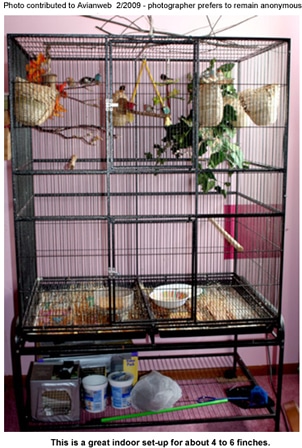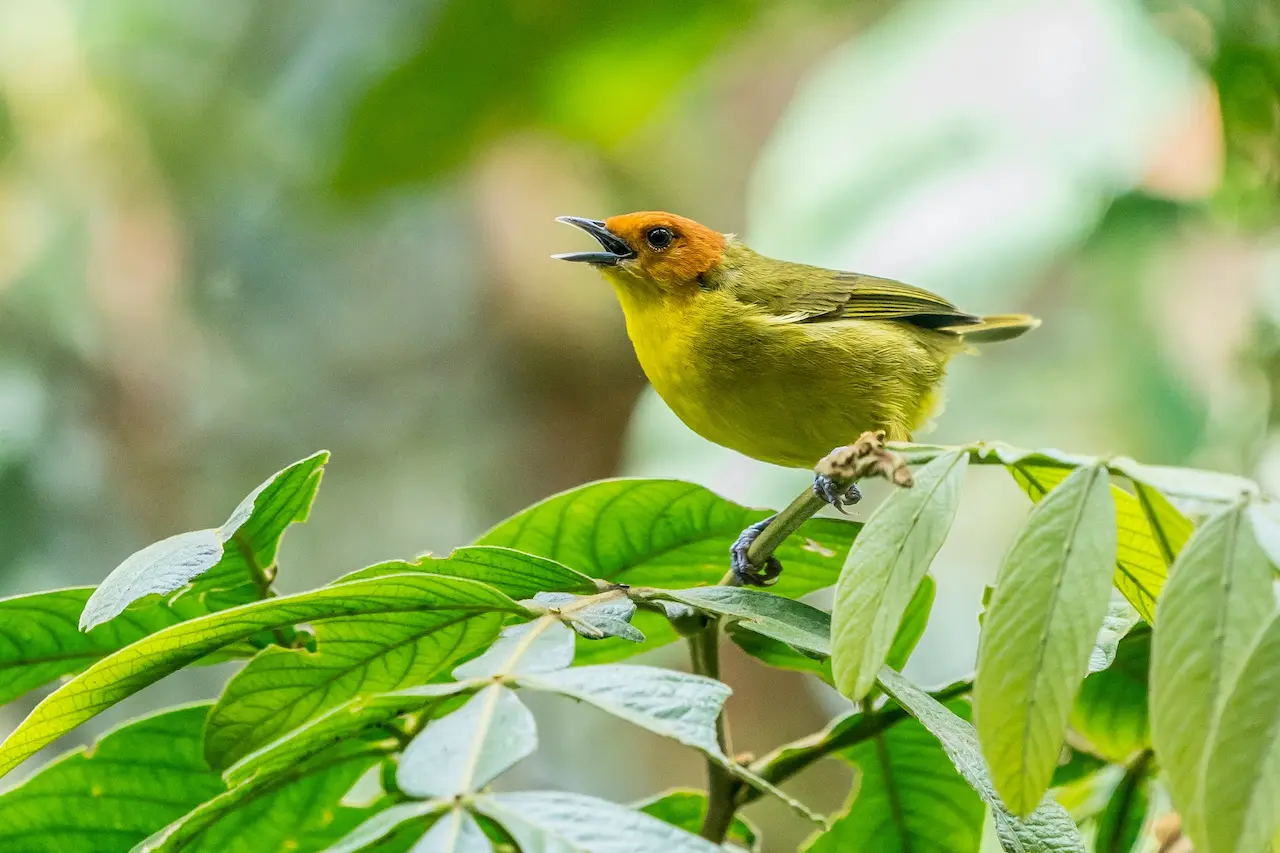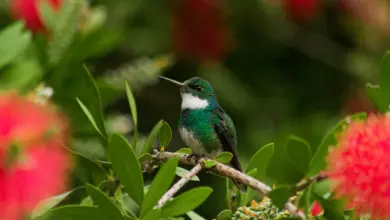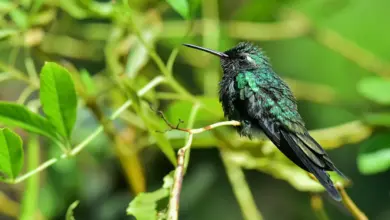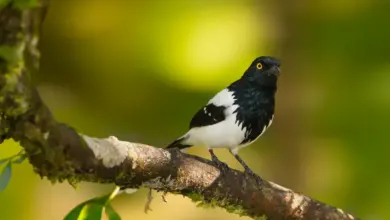Society Finch (Lonchura striata domestica)
The Society finches Lonchura striata domestica is one of the subspecies of White-rumped Munia. It is a popular domesticated finch whose ancestry is the subject of debate.
The society finch is the only type of finch that doesn’t live in the wild.
It is mostly accepted that these species of finches were first bred by the Chinese and over the years, breeders around the world have managed to breed lots of color variations including fawn, chocolate brown, pied, crested and etc. (Please refer to photos to the right.)
They are readily available in most pet stores and inexpensive — a great addition to someone’s aviary.
Society Finches in Aviculture:
Society Finches are hardy, easy to take care of, come in a variety of color mutations and make excellent parents.Like the Zebra Finches, they are often used to raise the chicks of less successful finch parents.
These little birds are known for their ability to get along so well with everyone including other finches hence their name “society” suggests.
They are cheerful little birds that do well in groups and are quite easy to look after. They are also quite easy to breed if, of course, adequately sexed which is very difficult as both genders look exactly the same.
Gender could be determined by behavior since the male of these species tend to sing to impress and court the female.
As they are great parents they are oftentimes taking over as foster parents for the Gouldian Finch, which is not as reliable at incubating and caring for its young as the society finches are.
Breeders will simply swap the eggs of the gouldian finch and the society finch. If this is done, it is important that the eggs are at the same stage of development (have been incubated for about the same time). The society finches are very affordable and prolific breeders.
Sharlene Berger from New Zealand shares the following story with us:
“I have a buttonquail hen sitting on at least 10 eggs in the bottom of a terracotta pot laying on its side, much to my shock and horror, a pair of my Bengalese finches have moved on in with her and all 3 are now happily incubating the quail eggs, when she gets of they cover more eggs, when she gets back they move over to make room.
I thought of trying to stop them but if the Quail hen is fine with it perhaps I should leave them to it … just proves Bengalese finches will foster anything!”
Societies as Pets:
Finches, in general, are great for people who enjoy watching birds rather than having a demanding pet that requires a lot of personal attention. I hate to see them in small cages.
Since these are birds that will ALWAYS be in a cage (or, hopefully, aviary), I would hope that people give them a roomy flight cage, maybe with some plants in it too for the finches to enjoy.
They should be able to fly. Make it a “project” to prepare an attractive flight cage / aviary for them, with lots of toys and natural branches, maybe some plants.
Diet:
A good Society Finch diet must include a mixture of millets, cereal seeds and canary grass seeds. Fresh water, cuttlebone and grit should be supplied at all times. Lettuce, Spinach, Chickweed, spray millet, Eggfood, Brocolli tops and Carrot tops can also be offered on a regular basis. Livefood is not necessary for the species.
Compatibility:
As the name insist Society (Bengalese) Finches are very social by nature and will get along together or with other bird species. Just be careful not to put them with other species that might be agressive towards them.
Housing:
Many Societies are house in individual breeding cages much like Canaries. However, they will thrive in a large planted aviary with plenty of room to fly, sing and socialize.
The best temperature to maintain is around 75 degrees as Societies do not do well in cold temperatures.
If your Socities are for breeding or fostering purposes you will need to house them in individual breeding cages after they have been sexed.
Same sex Socities can be paired in breeding cages and conditioned so that they will foster other exotic finch eggs. A lot of people use two males together in the same cage.
This way there are no other eggs laid as in the case of two hens placed together.
I prefer male-female pairs so they can raise their own young and if need be I can use them as foster parents.
Song:
The male Society Finch has a boisterously loud song. He will puff out his feathers and stand tall while he quickly hops from side to side singing.
They will sing to hens and other males. The hens do not sing but do make clicking or warning sounds.
Colors / Mutations:
The society finch comes in a variety of beautiful colors. The below photos featuring the different color variations are are courtesy of: Singing Wings Aviary – www.singing-wings-aviary.com
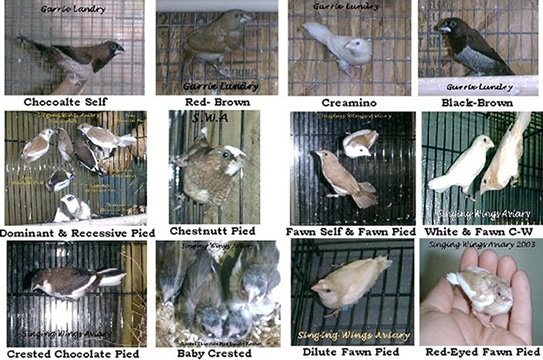
Breeding:
Bengalese are free breeders and are used to foster other exotic finches. They are not picky about a nesting site. They will adopt finch nest or finch boxes.
You can supply dry grasses, sisal, coconut fiber or mosses as nesting material. In order to breed it is best to have them paired in individual breeding cages.
They will breed in a colony setting but they are so social that 6 or more will try to squeeze together in one nest which results in offspring being crushed.
Many times I have seen Society Finches feed each others offspring through cage bars. I have also seen them take over raising other species in a mixed flight.
The average clutch consist of 4-8 eggs which the parents take turns incubating for 12-14 days. The time young Society fledge varies as some of ours fledge much earlier than others but on average they will fledge from 2-4 weeks.
After the young fledge it is another 2 weeks before they are completely independent. Society Finches will cross breed with other finches.
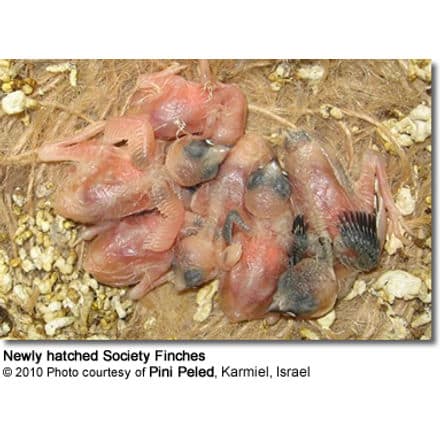
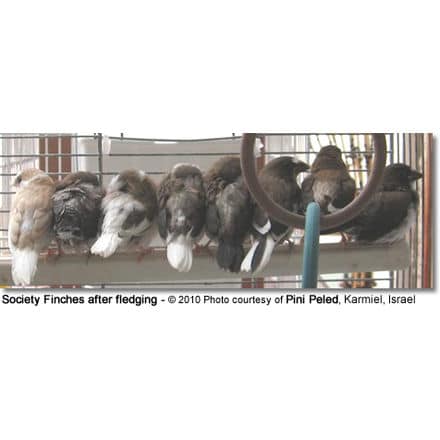
Further Finch Reading
- Finch Information
- Index of Finch Species
- Photos of the Different Finch Species for Identification
- Common Health Problems of Finches
- Finch / Canary Diet / Nutrition

